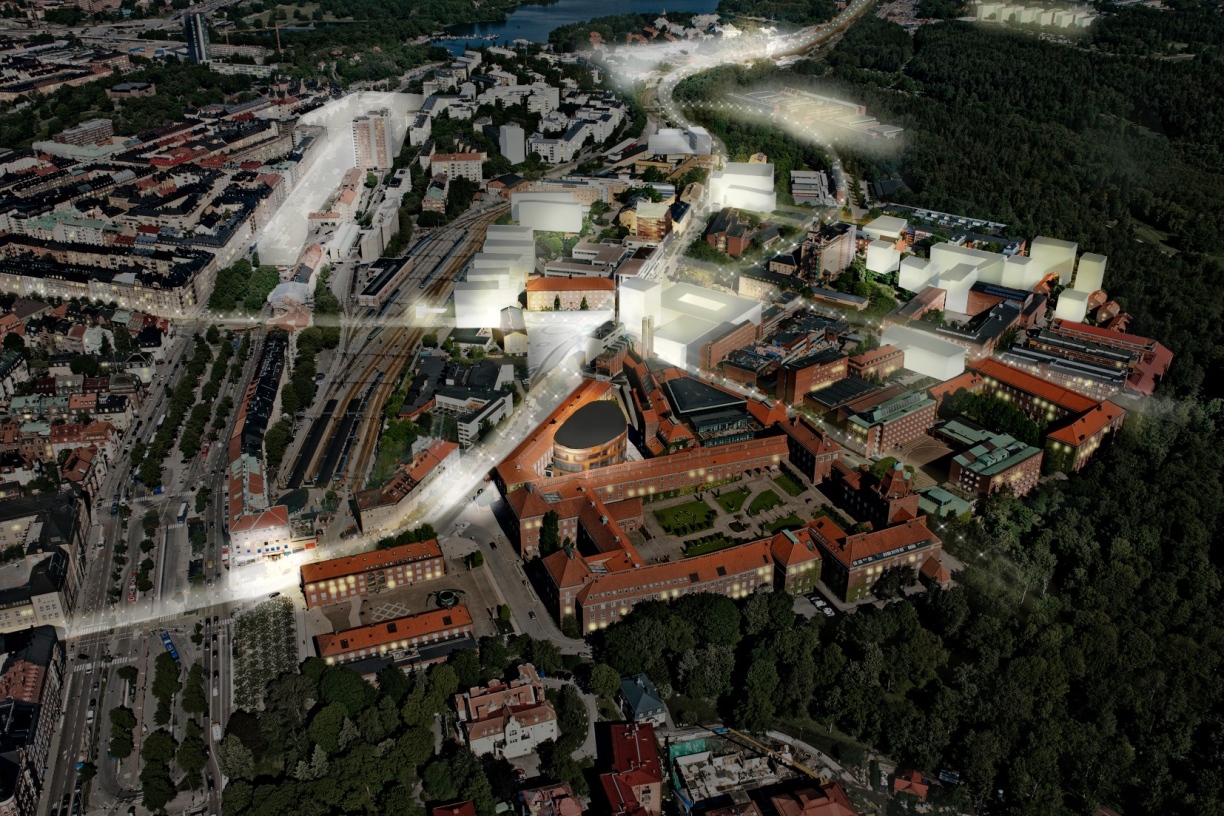
Campus plans earn international sustainability award
KTH has won the International Sustainable Campus Excellence Award for its campus plans. The plans outline the direction in which the campus will be developed over the next four to five years – the focus being on sustainability and on creating a vibrant campus.
Maria Granath, property manager at KTH, says: “Of course, I feel proud of this achievement. It demonstrates that we are ahead of the game internationally in terms of this way of thinking. Many people have been involved, and we have taken into account the campus as a whole: the buildings, the land, the organization and life here.
“The campus plans also show that we take great responsibility for the special conditions we have around us, with the Royal National City Park on one side and the densely built-up stone city on the other. We also have a number of listed buildings in the area, which helps us maintain close contact with the County Administrative Board, Stockholm City Museum and the City of Stockholm.
The award-winning plans have been developed in close cooperation with the property owner Akademiska hus.
Peter Gudmundsson, President of KTH, says: “Our campus contributes significantly to our attractiveness, both nationally and globally, and so it is of course both satisfying and significant that attention should be paid to us through an international award win of this type, with a focus on sustainability.”
The prize was awarded because the KTH campus plans are “an outstanding example of excellent, sustainable campus planning – where design and operations are integrated – and a good showcase for the principles advocated by the International Sustainable Campus Network (ISCN).
The work, which has taken about one-and-a-half years, has been widespread, involving teachers, researchers, students, employees, other tenants at the campus, the City of Stockholm's urban planning office through various workshops, as well as consultant architects White Architekter.
“We’ve been working in a new way, with those who use the school premises daily having been involved in developing the plans,” Granath says.
In accordance with the British BREEAM environmental certification system, the campus plans have been drawn up under the following headlines: participation, social and economic wellbeing, resource management, transport and movement, land use and ecology, and innovation.
The KTH Vision 2027 and the ongoing development plans are other starting points. The Campus plans are included in the fact that sustainability issues must permeate the whole of KTH, not only in terms of education and research, but also transport, buildings and everyday life on campus.
The campus plans outline both what will happen in the next few years, and developments due in the longer term. Densification, more student housing, the constant influx of an increasing number of organizations, and increasing international exchange are among the things included in the plans.
“Within 10 years, I think, for example, that we will see a move towards greater transparency, with the various research environments becoming more visible,” Granath says.
KTH and Gothenburg University are the two Swedish universities included in ISCN. The International Sustainable Campus Network (ISCN) comprises a total of 60 universities.
Jill Klackenberg